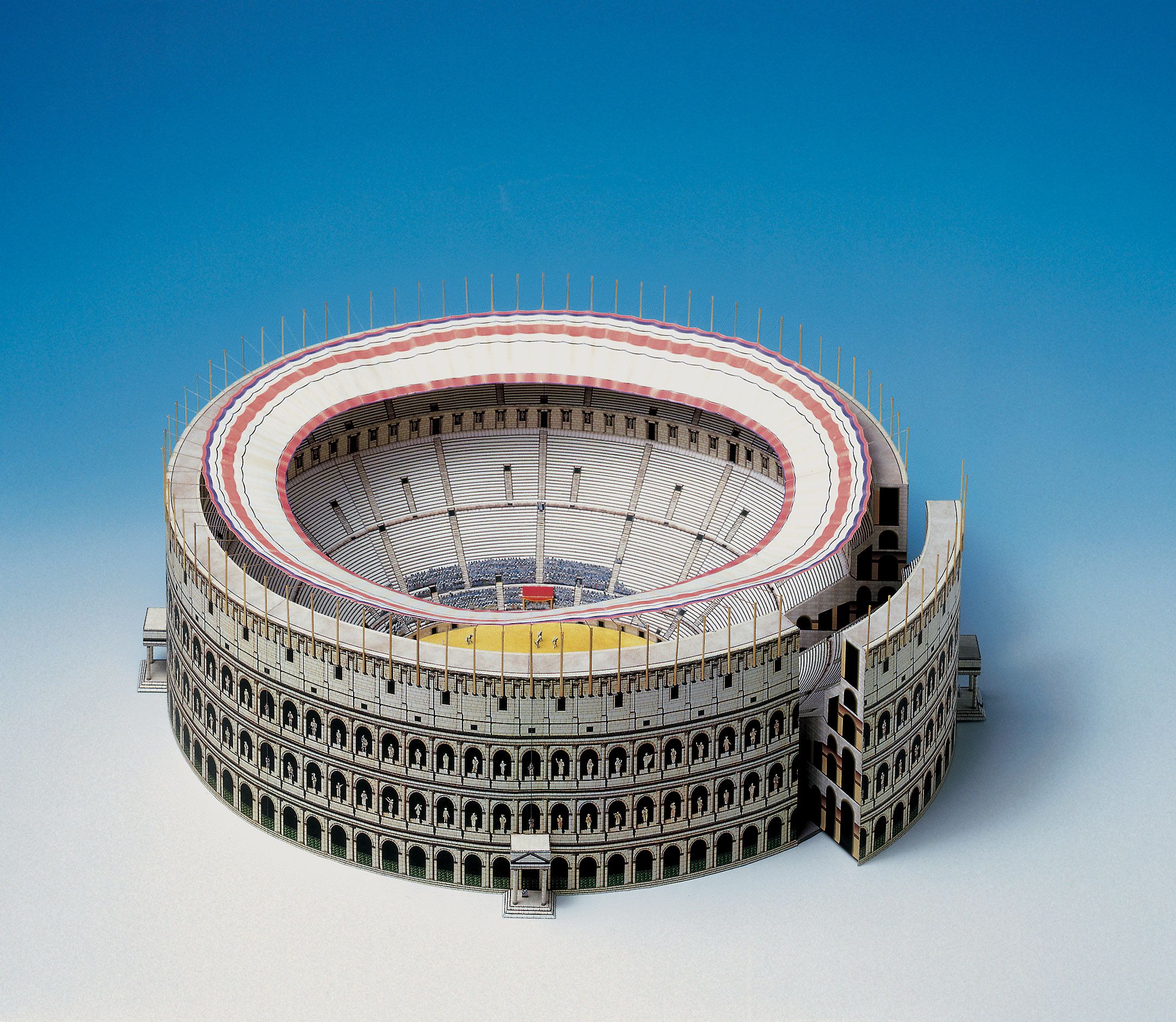
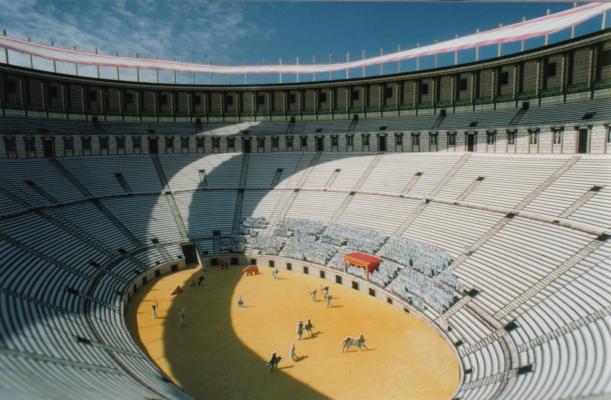
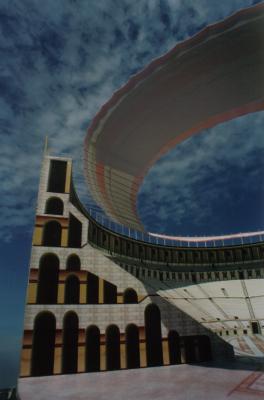
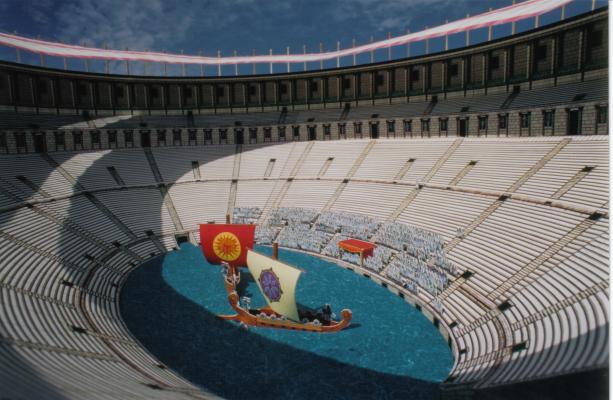
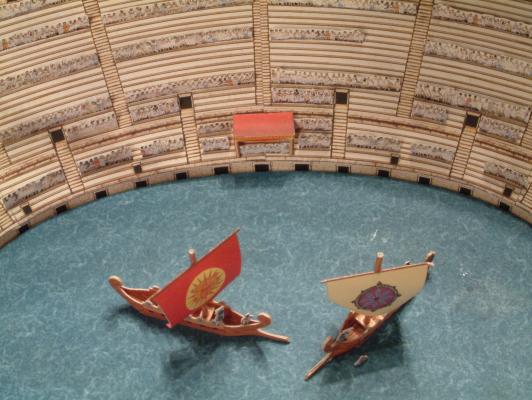
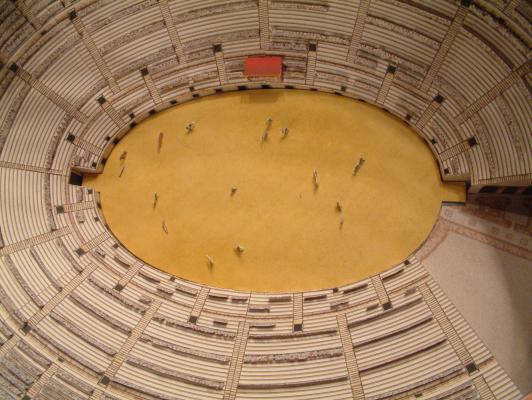
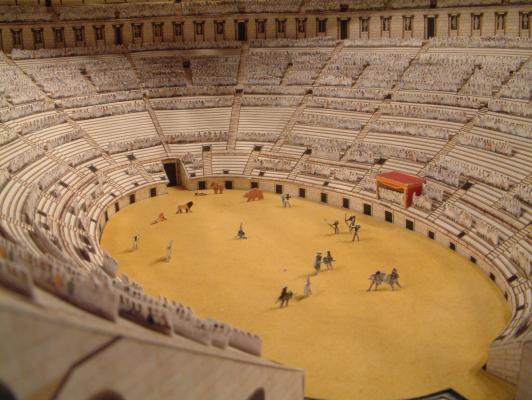
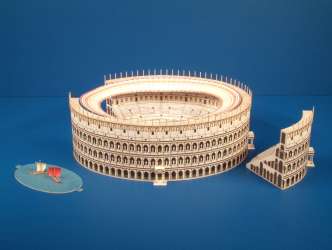
























Colosseum
The Colosseum in Rome was the largest amphitheatre of antiquity and the model for arenas such as those in Verona, Arles, Nimes.
In Roman times it bore the name "Amphitheatrum Flavium", which was only replaced by the name Colosseum (because of the 35 m high statue there) in the Middle Ages from the 11th century onwards. The elliptical building measured 188 m in length and 156 m in width. It was inaugurated around 80 AD and was the scene of gladiator fights and animal hunts. The inauguration was celebrated for 100 days. There are different estimates of how many spectators the Colosseum held, but one can assume between 40,000 and 70,000.
The Colosseum was therefore a gigantic arena that was well thought out: For example, it had a multitude of stairways and corridors inside, which made it possible for all spectators to leave the structure within an hour. Under the stage floor, there were corridors and channels that even made it possible to show sea battles. Cages and arsenals were also located underground. On the outside, the building was clad in stone slabs of travertine, and the stairs and seats were made of marble.
It was used for performances until the sixth century. From the 13th century it fell into disrepair. It was affected by earthquakes, but it also served as a quarry for other buildings. Thus, the Colosseum became more and more of a ruin until it was consecrated in 1749 as a place of martyrdom for persecuted Christians. Afterwards, the remains were secured and restored.
| Aspiration scale: | Medium |
|---|
